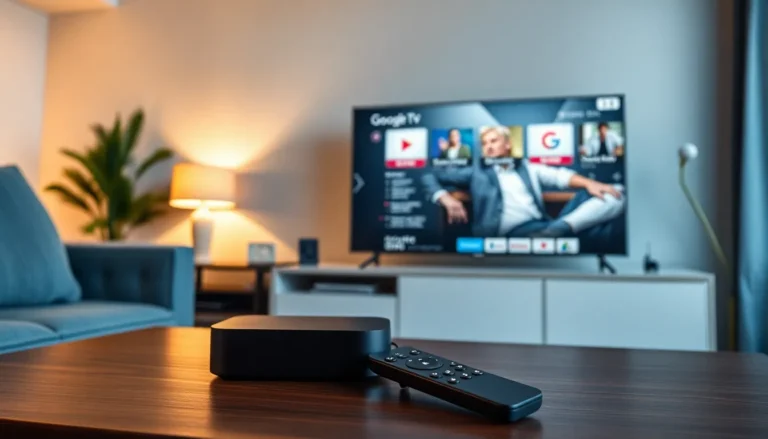Freelancing has transformed the way creative professionals approach their craft. With the freedom to choose projects and clients, many find themselves navigating a unique creative process that blends inspiration with practicality. Understanding this process is essential for anyone looking to thrive in the gig economy.
From brainstorming ideas to refining final products, the freelance creative journey involves various stages that can vary greatly from one individual to another. Each step is crucial in shaping the outcome, whether it’s a stunning graphic design, an engaging piece of writing, or a captivating video. By exploring the nuances of this process, freelancers can unlock their potential and deliver exceptional work that resonates with clients and audiences alike.
Table of Contents
ToggleUnderstanding The Freelance Creative Process
The freelance creative process consists of several key stages that shape the final outcome of a project. Each stage plays a vital role in transforming initial ideas into deliverable products.
1. Brainstorming
Brainstorming initiates the creative journey. Freelancers generate ideas based on client briefs, personal interests, or market trends. Diverse methods such as mind mapping or free writing enhance idea generation.
2. Research
Research fuels the design and development process. Freelancers gather information on target audiences, industry standards, and competitive landscapes. This knowledge informs project direction and ensures alignment with client objectives.
3. Concept Development
Concept development involves refining initial ideas into actionable plans. Freelancers outline project goals, create sketches, or draft outlines. This phase forms the foundation for further creation.
4. Creation
Creation entails translating concepts into tangible work. Freelancers produce design elements, write content, or develop multimedia projects. Every decision during this phase reflects the project’s goals and audience expectations.
5. Revisions
Revisions improve the quality of the final product. Freelancers seek feedback from peers or clients and make necessary adjustments. Iterative refinements enhance overall effectiveness.
6. Finalization
Finalization encompasses polishing the project before delivery. Freelancers ensure every detail aligns with client specifications and industry standards. This stage culminates with the submission of the deliverable to the client.
7. Reflection
Reflection follows project completion. Freelancers assess what worked well and what didn’t. This insight guides improvements in future projects, fostering ongoing professional development.
Understanding each stage of the freelance creative process empowers freelancers to enhance their skills, improve client satisfaction, and navigate their unique workflows effectively.
Key Stages Of The Freelance Creative Process

Freelancers navigate several critical stages during their creative process. Each stage contributes to the overall quality and success of the final product.
Ideation
Ideation involves generating a variety of ideas based on client briefs, personal interests, or emerging market trends. He or she may use techniques like mind mapping or brainstorming sessions to gather numerous concepts. Collaboration can play a key role as freelancers often consult peers or mentors for additional insights. Diversifying input enhances creativity and encourages unique approaches.
Research
Research encompasses gathering data about target audiences, competitors, and industry standards. He or she analyzes demographics to understand audience needs, preferences, and behavior patterns. This stage aids in shaping the direction of the project, ensuring alignment with clients’ goals. Utilizing tools like surveys and analytics improves market understanding. A thorough research phase adds depth and relevance to the creative work.
Concept Development
Concept development focuses on refining the most promising ideas into structured plans for implementation. He or she prioritizes elements based on client feedback and project goals, determining the most effective pathways for execution. Visual sketches or outlines may facilitate presenting ideas clearly. This stage establishes a solid foundation, enabling the freelancer to proceed confidently to the execution phase.
Execution
Execution involves bringing concepts to life through tangible deliverables. He or she translates refined ideas into various formats, such as graphics, written content, or digital applications. Attention to detail remains paramount, with each creative decision reflecting project objectives. Ongoing communication with clients ensures the direction meets expectations. This stage culminates in a finished product that embodies both creativity and client specifications.
Challenges In The Freelance Creative Process
Freelancers encounter various challenges throughout the creative process, which can impact productivity and project outcomes. Addressing these challenges effectively is crucial for maintaining high-quality work and client satisfaction.
Time Management
Time management poses a significant challenge for freelancers. Balancing multiple projects often leads to scheduling conflicts and missed deadlines. Establishing clear priorities helps freelancers allocate time effectively. Tools like project management software or time-tracking apps aid in monitoring progress. Creating structured work hours fosters discipline and mitigates procrastination. Setting achievable daily targets enhances focus, ensuring steady advancement through the creative stages.
Client Communication
Client communication frequently presents hurdles in the freelance creative process. Misunderstandings or vague instructions can derail projects. Regular check-ins complement clear communication, fostering alignment between freelancers and clients. Using detailed briefs encourages transparency and clarifies expectations. Establishing channels for feedback promotes iterative improvements, preventing last-minute revisions. Documenting conversations also serves as a reference, reducing ambiguity and misunderstandings.
Best Practices For A Successful Freelance Creative Process
Navigating the freelance creative process successfully requires implementing effective practices. These practices significantly enhance productivity and project quality.
Establishing A Routine
Establishing a routine helps freelancers maintain consistency and focus. Setting specific working hours ensures dedicated time for creative tasks. Incorporating breaks into the schedule prevents burnout, increases creativity, and enhances overall productivity. Utilizing time-blocking techniques allows freelancers to allocate chunks of time for different project phases, from brainstorming to revisions. Regularly reviewing daily or weekly goals keeps momentum and accountability high.
Staying Organized
Staying organized is crucial for managing multiple projects and deadlines. Freelancers can use project management tools, such as Trello or Asana, to track progress and deadlines effectively. Creating a centralized digital folder system helps store all related documents and files, making them easily accessible. Maintaining a client communication log ensures that all discussions are documented and easily referenced. Routine cleanup of digital workspace enhances efficiency by reducing clutter and facilitating quick retrieval of important information.
Freelancing in the creative field presents unique opportunities and challenges. By mastering the stages of the creative process freelancers can produce exceptional work that resonates with clients and audiences alike. Emphasizing organization and effective communication is vital for navigating the complexities of multiple projects.
Adopting best practices not only enhances productivity but also fosters a fulfilling creative journey. As freelancers reflect on their experiences and continuously refine their workflows they pave the way for ongoing success. Ultimately the ability to adapt and innovate within the freelance landscape is what sets creative professionals apart in a competitive market.








